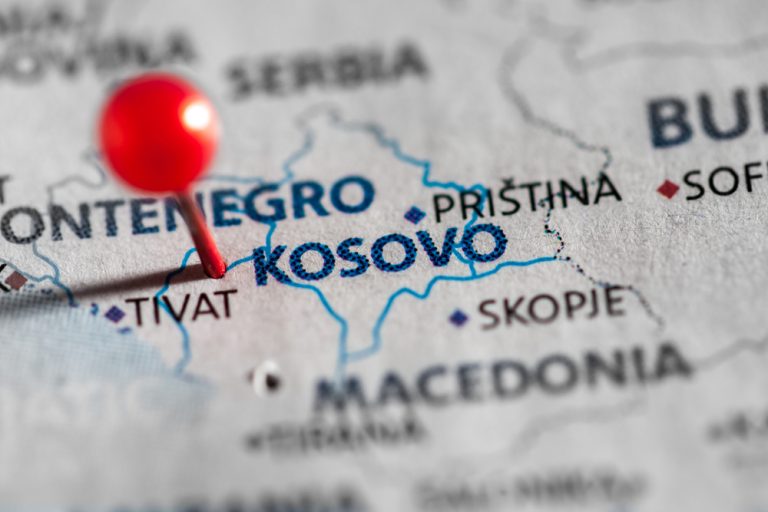
Mass shootings in Serbia: American Columbine for export
The national holiday in honor of St. George was marred this year by a series of tragedies. On May 3, a schoolboy shot students and staff members of a Belgrade school, and two days later, in Mladenovac, a young man used an assault rifle to kill his attackers and random victims. As a result, dozens of people were killed and wounded. The two incidents were interspersed with less visible and, fortunately, averted incidents of juvenile aggression. What happened in one of Europe’s most peaceful countries during these warm spring days?
On the morning of May 3, seventh-grader Kosta Kecmanović took two guns from his father’s safe. He put the guns in his briefcase along with three bottles of Molotov cocktail and went to his school “Vladislav Ribnikar”. Upon arriving at the school, the 13-year-old shot and killed eight children and one security guard, while seven children and a teacher were wounded. The attacker was apprehended. It turned out that he had been preparing the crime for a year: he went to the shooting range together with his father and made a list of his victims, who allegedly mocked him. In the past there were no criticisms of the teenager, he studied well and regularly participated in mathematical Olympiads.
What happened next was called the “domino effect”. On May 4, a 16-year-old girl came to her former school in Belgrade with a knife, wounding one of her students and the teacher who tried to stop her. The victims of the incident were not seriously injured, but panic gradually spread in the community.

On the night of May 4-5, 21-year-old Uroš Blažić, son of a retired counterintelligence officer, shot more than two dozen people with an automatic weapon in the Serbian suburb of Mladenovca. The shooter went home after the conflict, took his machine gun, got in his car and came back to clear things up. He did not talk long, though: Uroš opened fire on his attackers from his car and fled. Afterwards he displayed two more acts of unmotivated aggression, shooting at two groups of young people he encountered on the way. As a result, 8 people died, 13 were wounded. The victims’ ages ranged from 14 to 23. Among the dead was a young policeman with whom the conflict allegedly took place. The Serbian Minister of Interior declared the incident a terrorist attack. More than 600 policemen were deployed to search for the culprit, using sniffer dogs and thermal imaging drones. In the morning, Blažić was apprehended on the outskirts of Kragujevac.
On May 5, Armin Alibasic, a resident of Novi Pazar, was detained in Belgrade. The reason was the publications in social networks, where the man posted relevant content: threats and personal video of training at the firing range. In Sremska Mitrovica, a 14-year-old from Larchak was detained the next day and promised to repeat the Belgrade shooting at his school. On St. George’s Day, the reports went out like a volley of multiple guns: In Novi Sad, three 15- and 16-year-old schoolchildren were arrested as they prepared to come to school with guns; police came to a girl from Belgrade for praising Kosta Kecmanović and mocking his victims; in the already mentioned Sremska Mitrovica, police seized a 22-year-old young man who was about to repeat the mass shooting in his town; in Knjazevac, a 15-year-old boy promised to kill a classmate. Given the increased attention of the police to what happened and the rising degree of mass hysteria, there will only be more such reports.
Aleksandar Vučić addressed the nation on May 5. The President announced an increase in the number of police officers to 1,200, and they will be posted in the schools as guards. Vučić pledged to reduce the number of civilian gun owners from 400,000 to 30,000, by law and through follow-up checks by the Ministry of Interior. There will be a two-year moratorium on the purchase of short-barreled weapons. Hunters will also have to face tougher rules about keeping and receiving licenses. In addition, the President asked the Ministry of Interior to consider the option of a moratorium on the purchase of any civilian weapons. For those citizens who are in possession of arms and ammunition illegally, Vučić gave a month for voluntary surrender. Otherwise, the President promised serious consequences and immediately announced tougher criminal responsibility for illegal possession, carrying and trafficking in weapons. In addition, the Serbian president announced a lowering of the threshold of criminal responsibility for minors from 14 to 12 years old. Vučić would like to bring back the death penalty, but according to the Serbian leader, the government keeps him from this step.
But should we look for the reason only in the access to weapons? Opposition activists believe that the entire system, which has failed, must be changed. The government must resign, and the propaganda of violence must be removed from the information space in order to reduce the negative impact on the younger generation. The Prime Minister, Ana Brnabić, does not believe that the malfunction was “systemic” and that it was difficult to predict the case, but new measures, including the reduction of criminal responsibility for minors, as in some EU countries, is the right decision for Serbia. Representatives of the intellectual elite in the country are still convinced that the upsurge of aggression is the perennial domination of reality TV and the local Internet, the promotion of violence, and the irresponsible behavior of officials and public figures, which sets a bad example for young people. However, some thinkers in Serbian society are asking the right question: who is really educating the children of one of the most conservative European countries today? They give a sad answer with the statement that Serbia is under ideological occupation of modern Western values.

The world owes a grim tradition of skullduggery to the events in Columbine. On April 20, 1999, Eric Harris and Dylan Klebold stormed the school campus with guns and killed 12 students, one teacher, and wounded 23 others. The juvenile killers eventually committed suicide. Harris and Klebold unlocked another outlet from the depths of hell unleashing a phenomenon called the Columbine Effect. It became the term for the mass school shootings that rippled through the world continuing intermittently today. “Columbine” as a phenomenon became part of popular culture, films were made about it, and communities of the same name began to appear on social networks around the world. Some of their members, unfortunately, later became Harris and Klebold wannabes.
At some point the “Columbine effect” reached Serbia. Emotions about gun bans gradually cooled down in society. Now the Minister of Education, Branko Ružić, has already resigned, seeing that his ministry is to blame for a serious systemic failure. The ministry has developed a support program for children and parents, as well as school employees throughout the country, to prevent and avoid similar situations in the future. As of May 8, police officers have been on duty in all schools throughout the country. Serbian professor Dragan Simeunovic stated that proper education, morality and religion, which in the past distinguished the Old World, are gradually disappearing from the continent. Orthodox Serbia is no exception. It is worth noting that the current generation of “shooters” is children of the “zero years”, a time of protracted crisis in the “Serbian world”. The wars of the 1990’s, the country’s disintegration and economic instability have been replaced by allied bombings, new sanctions, and the separation of Kosovo. A generation exhausted by two decades of turmoil had children who at least in part copied the painful traumas of their parents.
As for the question of the disarmament of Serbs, an initiative that Aleksandar Vučić immediately proposed as one of the main ones, society also raises the question of the appropriateness of such harsh measures. Weapons are one of the attributes of a free man and his basic right. In the final analysis, it is not guns that shoot, but specific people who are pushed by internal circumstances to do such heinous things. Serbia has thousands of years of traditions, among them the Orthodox faith, the cult of family and clan, loyalty to a number of customs that are still preserved by society today. The problem is that the Western invasion deprived the country of its sovereignty, together with political restrictions, started aggressive westernization of the local society, especially of the youth. Unfortunately, the U.S., NATO, and EU did not bring peace, prosperity and genuine human values to the Balkans. The exported Columbine, lavishly printed these days in Serbia by unhappy adherents of a cruel cult, is one of the sad proofs of this.


Average Rating